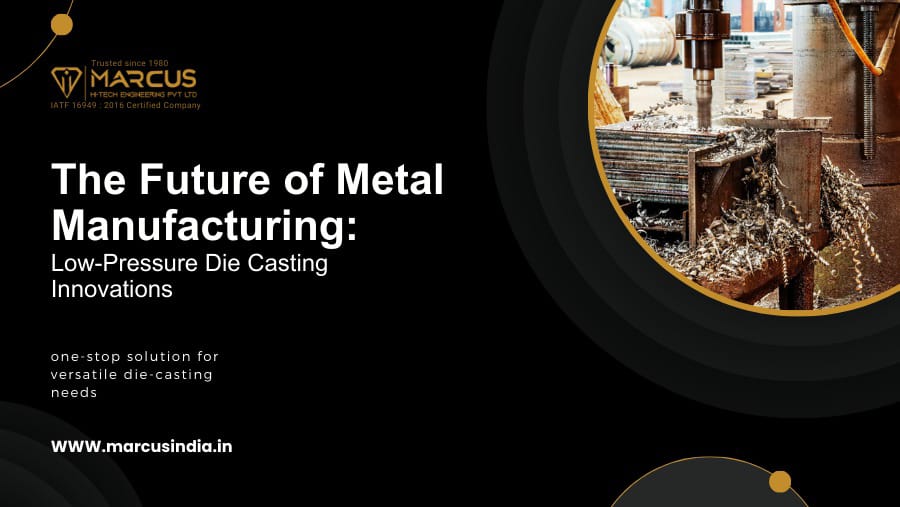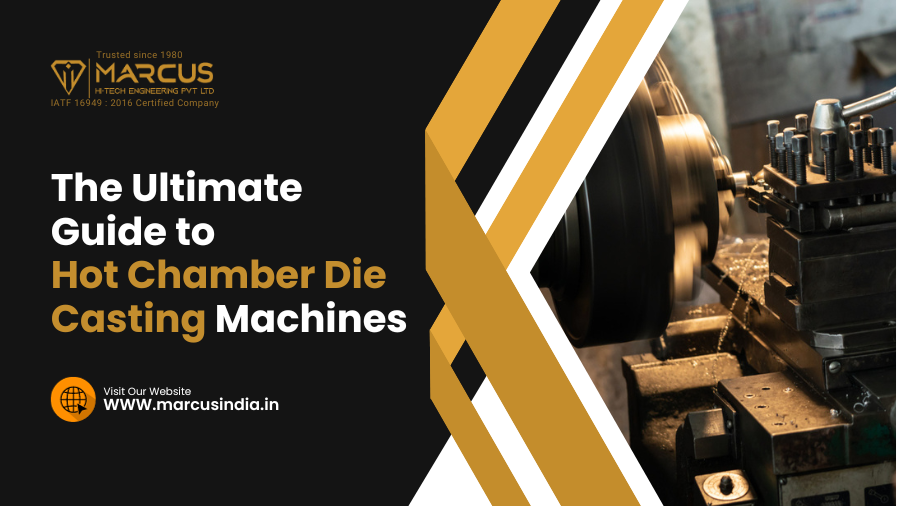In manufacturing, pressure die casting is preferred for producing highly precise, intricate metal parts. The significance of tooling and mold design lies at the heart of this process. Without the right tools and molds, even the most advanced die-casting machines would fail to produce the desired results.
In this blog, we’ll explore the pivotal role of tooling and mold design in pressure die casting and why it’s a game-changer for businesses.

The Basics of Pressure Die Casting
Pressure die casting is a casting process where molten metal is into a mold cavity under high pressure. This method is favored for producing large volumes of metal parts with intricate designs and tight tolerances. The molds, often made of non-ferrous metals like aluminum or zinc, play a crucial role in determining the accuracy of the final product.
The Role of Tooling and Mold Design

Precision and Accuracy
The design of the mold directly impacts the precision of the casted part. A well-designed mold ensures that the molten metal fills the cavity evenly, reducing the chances of defects and ensuring dimensional accuracy.
Efficiency and Productivity
Efficient mold design can significantly reduce the casting cycle time. The manufacturers can produce parts in less time with the right tools and molds, leading to increased productivity.
Cost-Effectiveness
While investing in high-quality tooling might seem expensive initially, it pays off in the long run. A well-designed mold lasts longer, requires less maintenance, and ensures consistent quality, reducing production costs.
Material Considerations in Mold Design
Material selection is one of the most critical decisions in mold design for pressure die casting. The mold material must withstand the high temperatures and pressures of the casting process without deforming or wearing out prematurely.
Aluminum Alloys
Aluminum alloys are used in die casting molds due to their excellent thermal conductivity and ease of machining. They can withstand high temperatures and balance strength and weight well.
Steel Alloys
Steel alloys, especially tool steels, are another popular choice for die casting molds. They offer superior strength and wear resistance compared to aluminum alloys but are more challenging to machine and can be more expensive.
Beryllium-Copper Alloys
These alloys are sometimes used in areas of the mold that require rapid heat removal. They have excellent thermal conductivity and can help reduce cycle times in the casting process.
Tools in Pressure Die Casting

The success of the pressure die casting process hinges on the mold design and the tools and machinery employed. These tools, often overlooked, play a pivotal role in ensuring the efficiency, precision, and quality of the final product.
Die Casting Machines
Die casting machines are the heart of the casting process. They come in various sizes and configurations, tailored to the specific needs of the production:
- Hot Chamber Machines: Suitable for metals with low melting points, like zinc. The furnace is a part of the machine, allowing for faster cycle times.
- Cold Chamber Machines: Used for metals with high melting points, like aluminum. The molten metal is ladled into the machine for each shot, making the process slower than hot chamber casting.
Clamping Units
Once the mold is designed and manufactured, it’s mounted onto a clamping unit. This unit ensures that the two halves of the mold are securely fastened during the casting process. The strength and precision of the clamping unit are vital to prevent any misalignment or movement of the mold, which could lead to defects in the casted parts.
Injection Mechanisms
The injection mechanism forces the molten metal into the mold cavity. It must operate under high pressure to ensure the metal fills even the most intricate parts of the mold. The precision and speed of the injection mechanism play a role in determining the quality of the final product.
Ejection Systems
Once the metal has solidified, the part needs to be ejected from the mold. Ejection systems, often consisting of pins or plates, remove the casted part without causing damage or deformations.
Trimming Tools
After ejection, the casted parts often have excess material, known as flash, which needs to be removed. Trimming tools, which can be manual or automated, remove this extra material, giving the part its final shape.
The Evolution of Tooling and Mold Design
Over the years, the pressure die casting industry has witnessed significant advancements in tooling and mold design. From manual sketches to computer-aided designs, the evolution has been transformative.
The Era of Manual Design
In the early days, mold designs were hand-drawn, relying heavily on the expertise and experience of the designer. While this method had its merits, it was time-consuming and prone to human errors.
Introduction of Computer-Aided Design (CAD)
With the advent of CAD, designers could visualize molds in 3D, allowing for better accuracy and precision. This reduced errors and paved the way for more intricate designs.
Simulation and Predictive Analysis
Today, advanced software allows for the simulation of the casting process. This predictive analysis helps identify potential defects or inefficiencies in the design phase itself, ensuring optimal performance during casting.
Environmental Considerations
As industries worldwide are becoming more environmentally conscious, the pressure die casting industry is no exception. Modern mold designs aim to reduce waste and increase the efficiency of the casting process, leading to more sustainable production methods.
Recycling and Reusing Materials
Many companies now focus on recycling and reusing materials in the casting process. This not only reduces waste but also cuts down on production costs.
Energy-Efficient Production
Modern die casting machines and mold designs aim to reduce energy consumption during the casting process. This helps reduce the environmental impact and leads to cost savings for manufacturers.
In the end
Pressure die casting is a symphony of precision, innovation, and sustainability. At its heart lies the art of tooling and mold design, dictating the quality and efficiency of the final product. As industries lean towards eco-friendly practices, die casting is at the forefront, merging environmental responsibility with manufacturing excellence. Marcus aptly reminds us that mastery in die casting isn’t just about machinery but the perfection of tooling and mold design. This harmonious blend transforms visions into reality in this intricate dance of design and technique.
FAQs
High Pressure Die Casting is a precision metal casting process used to produce intricate and complex metal components with excellent dimensional accuracy. This manufacturing technique is widely employed in the automotive, aerospace, electronics, and various other industries.
In this process, molten metal, typically aluminum or zinc-based alloys, is injected under high pressure into a steel mold, also known as a die. The die is specifically designed to form the desired shape of the final product. The application of high pressure ensures that the metal fills all the intricate details of the die, resulting in a finely detailed and precise finished product.
Several finishing options are available for die-cast parts, including painting, plating, anodizing, and powder coating. These finishing options can help improve the appearance and durability of the parts and provide additional protection against corrosion and wear.
Marcus has a comprehensive quality control system in place to ensure that all parts produced meet or exceed customer requirements. This includes rigorous testing and inspection throughout the production process and ongoing monitoring and evaluation of quality metrics.
Yes, Marcus can provide custom tooling for die-casting projects. The company has in-house tooling capabilities and can work with customers to design and manufacture custom molds and tooling to meet their specific needs.
Die Casting Process
The Die Casting Process is a widely used manufacturing method for producing precise and intricate metal components with consistent quality and dimensional accuracy. It involves forcing molten metal into a reusable steel mold, known as a die, under high pressure. The die is precisely designed to form the desired shape of the final product.
Here’s a step-by-step explanation of the die casting process:
Preparation: The process begins with the preparation of the die. The die is typically made from steel and consists of two halves: the fixed half and the ejector half. These halves are carefully machined to create the desired shape of the product.
Melting and Injection: The selected metal, usually aluminum, zinc, or magnesium-based alloys, is melted in a furnace at high temperatures. Once the metal reaches the required temperature, it is injected into the die cavity at high pressure using a special machine called a die casting machine.
Filling the Cavity: The high pressure ensures that the molten metal fills all the intricate details and cavities of the die, creating a precise replica of the die’s shape. This results in the formation of the component with the desired design and features.
Cooling and Solidification: After the die is filled, the molten metal is left to cool and solidify inside the die cavity. The cooling time depends on the size and thickness of the component. Rapid cooling techniques can be employed to enhance production efficiency.
Ejection: Once the metal has solidified and taken the shape of the die, the two halves of the die are separated, and the newly formed component is ejected from the die by using ejector pins.
Trimming and Finishing: After ejection, the component may undergo additional trimming and finishing processes to remove excess material, improve surface quality, and meet the specified tolerances.
Quality Control: The finished components undergo rigorous quality control checks to ensure they meet the required standards and specifications.
Advantages:
Excellent Dimensional Accuracy: High Pressure Die Casting allows for the production of intricate and complex metal components with high dimensional accuracy. This precision makes it ideal for manufacturing parts that require tight tolerances and consistent dimensions.
High Production Rates: The process is highly automated, enabling rapid production of large quantities of components in a short time. This high production rate makes it cost-effective for mass production applications.
Wide Range of Materials: High Pressure Die Casting can be used with a variety of materials, such as aluminum, zinc, magnesium, and copper-based alloys, providing flexibility in material selection for specific applications.
Smooth Surface Finish: The process yields components with smooth and fine surface finishes directly from the die, reducing the need for additional finishing operations.
Thin-Walled Structures: High Pressure Die Casting can create thin-walled structures with intricate designs, resulting in lightweight components without compromising strength and functionality.
Disadvantages:
High Initial Tooling Cost: Designing and manufacturing the dies used in the process can be expensive, particularly for complex components. The initial tooling cost may be a barrier for small-scale production or prototypes.
Limited Size Range: High Pressure Die Casting is more suitable for smaller to medium-sized components. Large parts may require alternative casting methods.
Porosity and Shrinkage: Some porosity and shrinkage may occur during the solidification process, which can affect the mechanical properties of the final product.
Design Limitations: The die casting process may impose certain design constraints due to the need for draft angles, uniform wall thickness, and the absence of undercuts.
Surface Defects: While the process typically produces smooth surfaces, certain defects like air pockets, flash, or surface blemishes may occur if not managed correctly.










